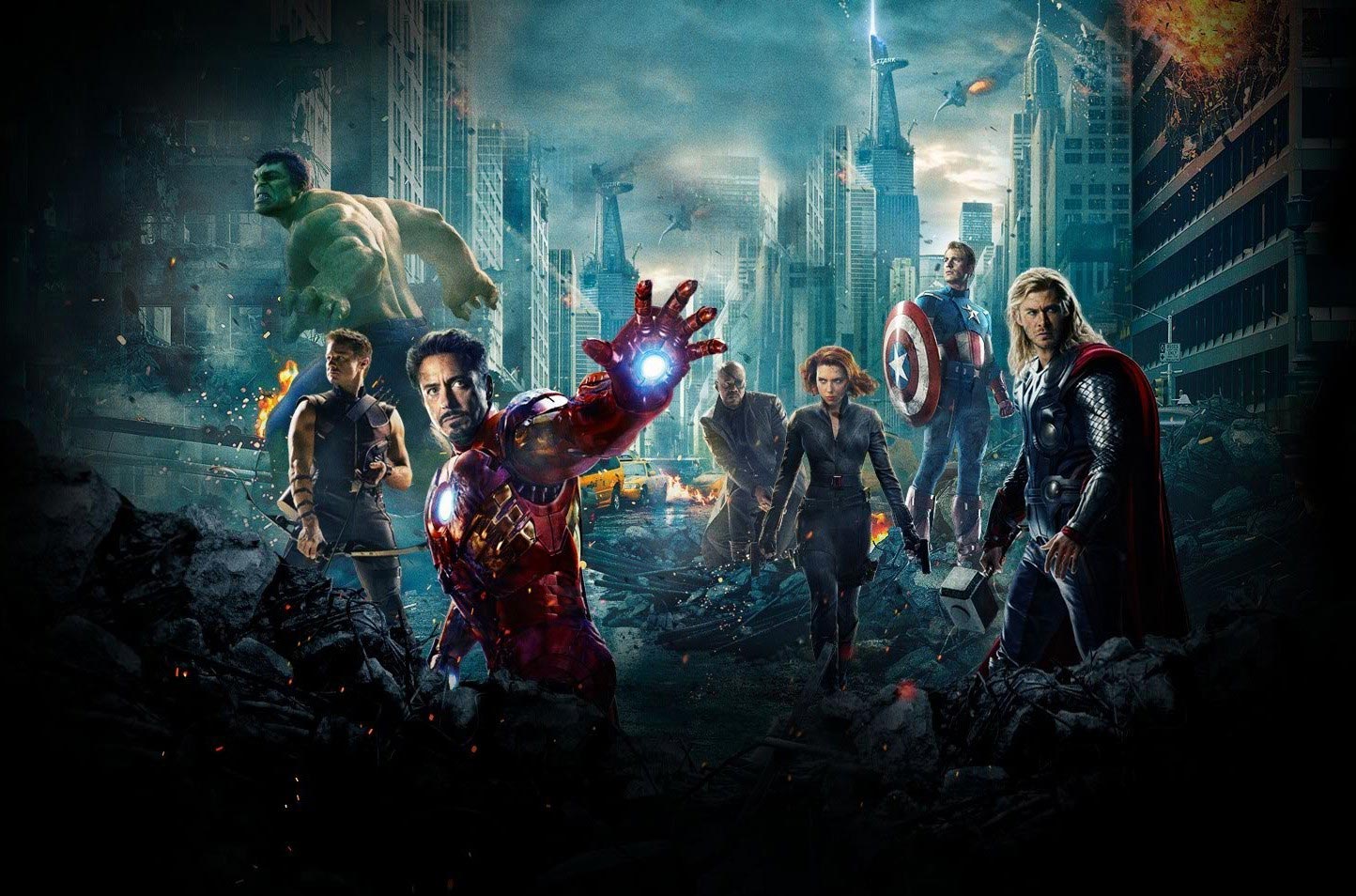Here is TV Series Lounge’s exclusive Marvel The Avengers movie review.
And there it is! Oh yes, the punch line to a series of five blockbuster hits. It’s not just a superhero movie, The Avengers is the superhero movie of the year. Not that this is surprising considering all the hype that came with it, but with Iron Man, Thor, Captain America and The Hulk all packed in that movie ticket, Marvel did you just that favor to make your day.
Praise the Superheroes who saved New York City (yes, that’s the place) but Director Joss Whedon can sleep with a smile for a long time knowing that he has put up an ensemble line of actors, famous superheroes and millions of dollars into something the audience will remember for the same time that he can smile about it. Although the theme (that’s right: saving the world) and the superheroes are not unfamiliar to most of the people (and you know I’m not exaggerating), The Avengers is a hit for fans (dream come true) and strangers alike – and that is saying something.
The cliche of every superhero movie is that there is always a villain, and in this case, Loki of Asgard (Tom Hiddleston) is the unfortunate bad boy. Loki has set his eyes on the Tesseract, an unlimited source of power and energy, to be able to open a portal where his evil and creepy army can invade the Earth. And because he was successful in stealing it from S.H.I.E.L.D (otherwise we won’t have a story), Captain Nick Fury (Samuel L. Jackson) was forced to call in the ragtag band of superheroes and assassins who played with the “hard to get” and “hard to work with” attitudes, including Iron Man (Robert Downey Jr.), Captain America (Chris Evans), Thor (Chris Hemsworth), The Hulk (Mark Ruffalo) and Black Widow (Scarlett Johansson). Oh and Hawkeye (Jeremy Renner) joined in later. With the hopes of maintaining peace, S.H.I.E.L.D now relies on these colorful suit-wearing heroes to do what every other superhero would and should do – save the world.
Right, so one thing that can be noticed in this action-packed movie is the balancing of character elements. Director Joss Whedon had all hands on deck for this one, and it’s obvious because of the universal pressure placed upon his shoulders to balance two things, the actors and the characters. The actors had big blockbusters up their sleeves going into The Avengers, although not all of them are great, (talking about The Incredible Hulk and Thor), and necessarily, sharing the load of acting isn’t as easy as anyone thinks it is. Egos had to be equalized. The characters’ screen presence and roles on the other hand had to be balanced in order to show that the film does not favor any of the superheroes, that’s why it’s The Avengers in the first place, not Iron Man and the rest of the Avengers or what have you. Fortunately, Whedon pulled it off, everything was balanced. Each actor had the moment to shine and each character had the opportunity to show off and take the stand for the entire world to see (seriously, who’s the greatest superhero in this movie?).
Another interesting point is that not normally does a superhero movie slap spectacular action, fresh humor and heart-warming drama in the audience’s faces all at the same time. But because The Avengers offered all of these in one basket, one can wonder how good this movie could get, and hands down, it was great – it was superb thanks to a carefully written script, a heavy dose of screen-blasting cinematography, and fighting scenes with “two thumbs up!” written all over them (It would be very unfortunate to miss Iron Man, Thor and Captain America fight each other!).
Then there is the actor’s performance evaluation segment. Robert Downey Jr.’s comedy antics really suited his happy-go-lucky Tony Stark character. With Chris Evans, Captain America never looked that cool and dazzling ever before. Chris Hemsworth finally nailed it with his Thor character. Tom Hiddleston never really wavered being Loki the first time and in this movie. And Mark Ruffalo? Well, Eric Bana or Lou Ferrigno would’ve been better suited for that green of a monster, Hulk. Mark Ruffalo being Dr. Bruce Banner felt forced in some way that it became uncomfortable watching him do so, but at least he tried. (Finally, something negative!) Samuel Jackson, Jeremy Renner, Scarlett Johansson (hot!) and Cobie Smulders (hot!) all did a great job performing their roles as members of S.H.I.E.L.D. What more can you ask for?
Who wouldn’t want to see a group of superheroes save the day? Better yet, who wouldn’t want to see them do just that in a movie full of action and energy? And best of all, who wouldn’t want to see The Avengers? Go ahead, indulge, and be ready for a ride in the cinema you will never forget.
Did you like The Avengers movie as well?














Comments